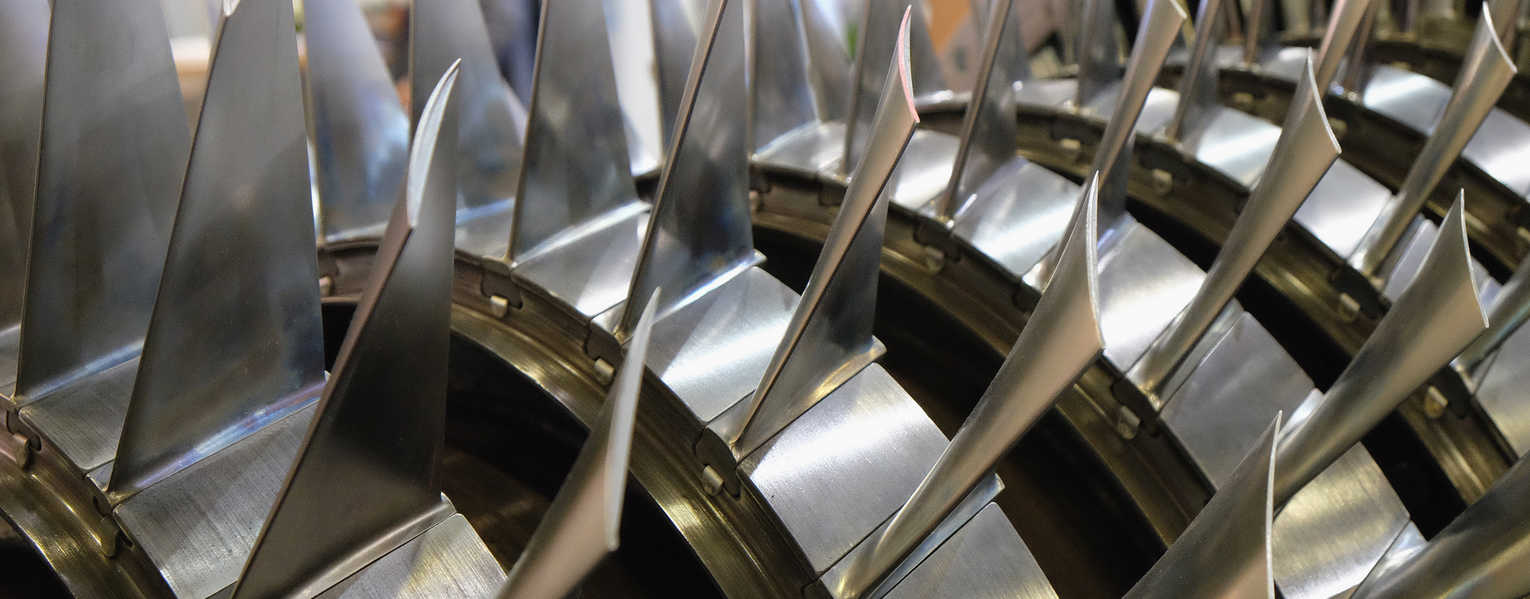Diagnostic Methods to Detect and Avoid High-Cycle Fatigue Damage
High-cycle fatigue (HCF) is avoided in rotating turbine blades by controlling vibratory stresses. Long blades are designed by tuning the lower natural frequencies to avoid operating near strong excitations and high vibratory stresses.
When the natural frequency variance is greater than an acceptable band, the blades must be designed with sufficient stiffness to limit stresses when blades operate at resonance. HCF failures can occur when these conditions are not met or if excessive excitations occur because of:
- Vane damage
- Rotating stall
- Flutter
- Blade tip rubbing
The variability of blade fabrication can influence natural frequencies on assembly; wear and erosion can reduce resonant frequency margins over time. Either of these conditions can result in high-cycle fatigue damage.
Blade Audit Approaches
There are several blade audit approaches used by Southwest Research Institute (SwRI) that can provide information on frequency margins and stress levels for turbine blades that have experienced HCF failures. Because these methods are based on testing of the actual blades in service, they relate to the actual installation and the mix of variables associated with fabrication, assembly, wear, and such.
The blade vibration audit methods used by SwRI include the following:
- Blade Frequency Audit provides experimental data for comparison with excitation at integral order sources. The method requires impulse testing of the blades installed in the turbine slots or of a set of blades mounted in a bench top fixture. Frequency margins at operating conditions are deduced by adjusting measured frequencies for temperature and centrifugal force effects. The data are plotted on a Campbell diagram to illustrate the frequency margins from integral order sources.
- Blade Modal Analysis provides a means to define the vibratory motion for each blade natural frequency. This illustration is useful for redesign of blade sets to avoid resonances. For example, the shrouds and lashing are features that can be readily adjusted for grouped blade sets to affect their natural frequencies. Modal analysis requires that a number of vibration points be recorded for each test to clearly define the details of motion. The required mass and stiffness changes to tune natural frequencies can be estimated with acceptable accuracy.
- Excitation of Rotating Blades is caused by passage through stationary wakes and flow distortions. Vector summation of modulating axial velocity with constant tangential velocity results in modulation in velocity relative to blade. Relative velocity modulation is used to calculate lift pulsation (pressure modulation).
- Blade Vibratory Stress Audit provides experimental data for estimating operating blade stresses. An "on resonance" stress analysis is applied to high-frequency modes or to evaluate transient conditions of lower frequency resonances. Blade transfer function data are recorded by impulse testing with strain gauges mounted at suspected failure locations. Operating stresses are calculated from the measured strain/force function, with dynamic forces based on steady gas load and dynamic factor, frequency margins, and damping. Calculated stresses are compared with the endurance limits for the blade material to determine the prospects for HCF damage.
- Probabilistic Analysis assesses the risk of failure of any one blade in a group based on statistical information. Failure could be associated with the probability that one blade will operate with less than adequate frequency margin or the probability that vibratory stress will exceed the endurance limit for some period of time. An accurate measure of probability of failure or risk times the consequence of failure is useful for financial evaluations of maintenance and repair options.
- Nonintrusive Monitoring is a technique developed by SwRI to detect shifts in blade natural frequency margins that contribute to high vibratory stresses. The method requires sensitive, high-frequency accelerometers mounted at the bearings that are calibrated to sense blade vibration sources. Data are continually recorded, filtered, averaged, and analyzed for synchronous multiples of running speed. Phase and amplitude trends are monitored and diagnosed for resonance and damping using modal fitting algorithms. The method will detect resonant frequency shifts for all blades or blade groups in a stage. Multiple blade rows can be monitored if their natural frequencies are separated by at least one rotational order.
- Telemetry Testing or Slip Ring Systems can be provided by SwRI when blade resonant responses are required at rotating conditions to assure that all blade-to-blade interaction and CF stiffening effects are included. Strain gages are attached at critical stress locations, wires are routed along the blade and rotor to a rotating transmitter, and the signals are received through a stationary antenna to stationary recording equipment.
Applications
All rotating blades, buckets, impellers; all stationary vanes, nozzles, and struts used in gas turbines, steam turbines, compressors, fans, expanders, and similar rotating equipment.
Supporting Technology
- Full metallurgical laboratory is usually required when conducting a root cause failure analysis with capabilities to identify fracture mechanisms, confirm material specifications, and evaluate environmental contributions.
- Field monitoring and diagnostic services to record and evaluate machinery vibration, pulsation, strain, and performance, at site locations.
- Dynamic and thermal analysis capabilities to evaluate structural and fluid dynamics of disks, airfoils, attachments, and such.
- Fracture mechanics analyses and life prediction.
SwRI can offer you a full range of capabilities and experience in gas turbine technology including becoming an extension of your engineering department. To contract with SwRI, please contact the Machinery Services Hotline at +1 210 522 3000.
For more information, contact Justin R. Hollingsworth or call +1 210 522 2537.

